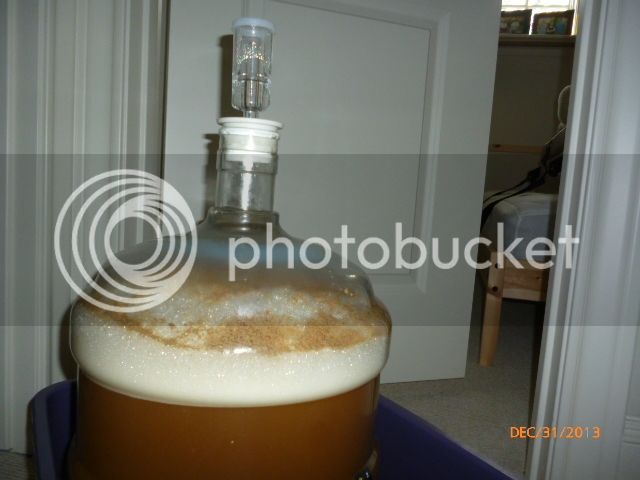Daughter got me a Christmas present and I am pumped to make my first batch. The kit had a 5 gal steel cooking pot, a 5 gal plastic carboy and about a 6 gal plastic bucket with no lid but with a hole near the bottom and a faucet to fit it. Other inclusions are siphon, bottle filler, capper, thermometer, carboy plug, funnel with strainer, airlock, hydrometer, tubes, sanitizers, a kit for making pale ale and an instructional video from Midwest Homebrewing supplies. The kit has no grain, only packages of malt, sugar and yeast.
Q. I dont want to buy a cooling coil because in a few months the tap water here in Houston probably wont be enough to cool the wort. For this first batch can I just set the boiling cooking pot in a tub with a few inches of water and add ice? If the ice is zero degrees and the 5 gallons of wort is 212 to get it down to 70 I will need about 10 gal of ice (80 lbs) does that seem right? So I will need a 15-20 gallon tub to do the cooling.
Q. When it is cooled, do I add the yeast to the pot and then pour everything into the carboy using the filtered funnel? Am I right to consider the carboy the fermenter? In the video the expert talked about using a glass carboy, all I have is a plastic one, wondering if it will be okay. When I get the wort in there should I top it off with water?
Q. It seems to me I could just pour the wort straight from the cooking pot into the 6 gallon plastic bucket, if I could find a good lid for it, and let it ferment in there (bypassing the carboy). Then when the beer was ready, just open up the tap on the bottom and fill the bottles. So maybe the carboy is redundant, or supposed to be used for something else?
This is my first post other than introduction. Im proud to keep it to approximately three to eight questions! Hope to meet all of you one day, this is a great looking forum.
putts
Q. I dont want to buy a cooling coil because in a few months the tap water here in Houston probably wont be enough to cool the wort. For this first batch can I just set the boiling cooking pot in a tub with a few inches of water and add ice? If the ice is zero degrees and the 5 gallons of wort is 212 to get it down to 70 I will need about 10 gal of ice (80 lbs) does that seem right? So I will need a 15-20 gallon tub to do the cooling.
Q. When it is cooled, do I add the yeast to the pot and then pour everything into the carboy using the filtered funnel? Am I right to consider the carboy the fermenter? In the video the expert talked about using a glass carboy, all I have is a plastic one, wondering if it will be okay. When I get the wort in there should I top it off with water?
Q. It seems to me I could just pour the wort straight from the cooking pot into the 6 gallon plastic bucket, if I could find a good lid for it, and let it ferment in there (bypassing the carboy). Then when the beer was ready, just open up the tap on the bottom and fill the bottles. So maybe the carboy is redundant, or supposed to be used for something else?
This is my first post other than introduction. Im proud to keep it to approximately three to eight questions! Hope to meet all of you one day, this is a great looking forum.
putts




